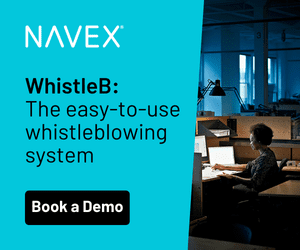A recent National Labor Relations Board (NLRB) decision in a highly anticipated case expands the definition of “joint employment,” raising significant issues for employers who rely on temporary or contract workers to supplement their regular workforce. In the decision involving Browning-Ferris Industries (BFI), the NLRB cites a myriad of factors as evidence that a joint employer relationship exists. The breadth of direct and indirect factors cited by the NLRB will make it challenging for companies to assess their vulnerabilities with their supplier/employer relationships. However, it is important for companies to review the factors cited by the NLRB and work with their suppliers of temporary workers to try to minimize their vulnerabilities to a “joint employment” claim.
For purposes of the analysis below, “supplier/employer” refers to the contractor-employer, as in the organization supplying temporary or contract workers. “User/employer” refers to the employer using the temporary or contract employees supplied by the supplier/employer.
Summary of NLRB’s Browning-Ferris Decision
BFI contracts with Leadpoint Business Services, which supplies contract employees to work inside its recycling facility at Newby Island. The BFI employees are represented by the Teamsters, who filed a representation election petition seeking to represent the Leadpoint employees. The NLRB, reversing a regional director’s decision, concluded that BFI and Leadpoint were joint employers and ordered that ballots from a provisional election be opened.
The factors cited by the NLRB in support of its joint employment finding included an expansive analysis of “direct” control and “indirect” control, without any cogent analysis of which factors were deemed more significant to the joint employer finding. The analysis, therefore, opens the door for most user/supplier relationships to be challenged as joint employment relationships.
Absent a reversal of the decision by a federal court of appeals, the NLRB has likely made use of temporary or contract employees a quagmire for the employment community.
What factors will establish a joint employment relationship?
Unfortunately, the sweeping language in the decision does not lend itself clarity in terms of which factors were considered significant to the NLRB’s finding, which simply cited a standard definition of joint employment: a joint employment relationship exists when two employers “(A) share or codetermine those matters governing the (B) essential terms and conditions of employment” over a group of employees. The NLRB embraced a sweeping “totality of the circumstances” test. It is the broad application of this “joint employment” test that raises numerous issues.
Prior to Browning-Ferris, it was commonly accepted that both user and supplier employers had to actually exercise control to support a finding that joint employers “shared or codetermined” terms and conditions of employment. Under the NLRB’s revised test, if the user employer has reserved “control” (meaning the user employer had the potential to exercise control contractually or otherwise), even if it did not exercise such control and/or possesses “indirect control,” a joint employment relationship appears likely. In support of this broader definition, the NLRB noted that “control,” regardless of whether or not that control is actually exercised, was consistent with an employment relationship.
- As an example, in support of its finding BFI was a joint employer with Leadpoint, the NLRB noted that BFI exercised “control” over hiring decisions because BFI retained the right to require Leadpoint to ensure applicants met BFI’s hiring standards, the right to prohibit the hiring of workers deemed by BFI to be ineligible for re-hire (such as former BFI employees terminated for cause) and the right to reject any Leadpoint worker sent to BFI.
- The NLRB also concluded that BFI controlled termination decisions because BFI retained the right to remove Leadpoint employees for “any reason.” In addition, on two occasions, BFI supervisors requested that Leadpoint employees be removed from the facility (even though the BFI supervisors contacted a Leadpoint supervisor and did not directly discipline the employees). Based on the reserved right to control, and the indirect exercise of that control, the NLRB concluded that BFI retained “control” over termination decisions of Leadpoint employees.
- The NLRB concluded that because BFI imposed a ceiling on wages paid to Leadpoint employees (by paying Leadpoint on a cost-plus basis) and because Leadpoint sought BFI’s approval to grant a wage increase (in response to new minimum wage legislation), BFI controlled Leadpoint employees’ wages.
- Factors that may lead to a joint employment finding based on the NLRB’s new “joint employer” analysis, which are typical in many user/supplier agreements, include:
- Having the ability to reject temporary employees or to ask the supplier/employer to remove employees.
- Establishing the qualifications of the temporary employees.
- Requiring a drug test of temporary employees.
- Setting forth a maximum wage scale to be paid to temporary employees.
- Provisions that the user/employer establishes work shifts.
- Requiring temporary employees to comply with the user/employer’s safety and training procedures.
- Having the primary employer’s supervisors supervise the temporary agency’s employees.
- Exercising “control” over the speed of work performed by the temporary employees.
“Terms and conditions of employment” appear to be the NLRB’s broadest definition of those terms — what are historically considered to be mandatory subjects of bargaining with a union, including direct/indirect control over:
- Hiring
- Firing
- Discipline
- Supervision
- Day-to-day work instructions, work direction or work assignments
- Wages, including agreements with wage caps, cost-plus agreements or other provisions affecting worker compensation
- Hours scheduled or worked, including overtime
- The number of workers supplied
- The method and manner of work performance
For example, BFI was found to be a joint employer because it exercised control over supervision, direction of work and hours for Leadpoint employees. The NLRB reached this finding because BFI controlled the flow of product through sorting streams and maintained productivity standards, purportedly urging Leadpoint employees to work faster. Under the NRLB’s rationale, because these subjects are amenable to bargaining and Leadpoint did not control these issues, finding BFI as a joint employer would further federal labor policy by permitting bargaining over these topics with BFI.
In addition, the NLRB also cited the fact that BFI controlled: (1) the tasks to be performed by Leadpoint employees, (2) where Leadpoint employees were stationed, (3) the number of Leadpoint employees assigned to work, (4) the timing of Leadpoint employee shifts and (5) when overtime was necessary. The Board found that BFI controlled these terms and conditions of employment even though BFI provided such direction through Leadpoint supervisors.
Under the NLRB’s analysis, putting temporary employees on a work schedule comparable to regular employees, directing what assignments temporary employees will perform and determining where temporary employees will work amounts to “direct or indirect control” over terms and conditions of employment sufficient to support a joint employment finding (even if that direction is given via the supplier employer’s supervisors).
Using this analytical framework, the vast majority of contractor relationships would now fall under the NLRB’s joint employer standards. The exceptions might be where a user employer uses an entire temporary or leased workforce, including supervisors.
Legal Pitfalls
Given the breadth of the decision, employers using contractor or temporary employees must now be aware of the following potential pitfalls:
- A joint employment relationship means joint liability for labor and employment law violations. If the NLRB test is upheld, supplier and user employers become jointly liable for violations of federal labor law. For example, if a manager of the supplier employer unlawfully threatened a contract worker concerning activities protected under the National Labor Relations Act (NLRA), such as signing a union card, both employers would be liable. This has repercussions for union avoidance campaigns, bargaining orders due to labor law violations and objections leading to re-run elections. In addition, it can be expected that if the NLRB’s test is upheld, the Department of Labor, the EEOC and state agencies will embrace a comparable definition, which would lead to expanded liability under various federal and state employment laws (such as statutes prohibiting discrimination, FMLA violations, disability claims and wage-hour claims).
- Expanded voting units in union elections. Employers must be aware of the potential need for early detection systems of possible union activity among their own employees, as well as temporary or contract employees. Part of the underpinning of the Browning-Ferris decision is the NLRB majority’s belief that temporary workforces are underserved by federal labor law. The majority noted that the existing definition of joint employers “foreclosed collective bargaining even in situations where it would be productive,” and criticized employers for attempting to “insulate themselves from legal responsibility to workers while maintain[ing] control of the workplace.” The decision is clearly intended to maximize organizing opportunities for unions seeking to organize temporary workers, implicitly suggesting that by organizing such employees, unions will be able to bring both the supplier/employer and user/employer to the bargaining table. In light of this, both the parties will be required to have early detection systems in place, along with appropriate managerial training on the respective “dos and don’ts” under federal labor law. In these situations, it should be easier for unions to now claim that temporary workers in existing bargaining units should simply be accreted into those bargaining units.
- Uncertain bargaining obligations. The NLRB’s decision raises questions concerning the supplier/employer and user/employer’s actual bargaining obligations. During the 1990s, the agency attempted to address the temporary worker issue, finding that multi-employer consent was NOT required for bargaining but that joint employers were only required to bargain over those issues that each employer actually controlled. Given the expansive definition of “control” in Browning-Ferris (direct and indirect), it can be expected that the NLRB will find that both employers are required to be at the table, negotiating over all terms and conditions of employment controlled by either employer. It can safely be assumed that the NLRB’s prohibition on non-consensual multi-employer bargaining will not survive in light of Browning-Ferris. However, this leaves open the question raised by the dissent: what is the bargaining unit and bargaining obligation for one supplier/employer serving multiple clients, particularly if the supplier/employer is deemed a joint employer with some, but not all, of its customers?
- Elimination of secondary boycott protections. The NLRB’s new joint-employer doctrine will eliminate many secondary boycott protections currently in place, in that more entities will become primary employers, thereby exposing those entities to labor disputes not directly involving their employees. As a result, those entities will no longer receive the protections of 8(b)(4) and (e) of the NLRA, which protect neutral parties from being subjected to “secondary” picketing and other threats, coercion and restraint that have an object of forcing one employer to cease doing business with the other. Currently, the union would be prohibited from direct picketing of one of the client companies because the client company would be a secondary employer, and therefore, picketing the client would run afoul of secondary boycott restrictions. If the client is deemed a joint employer, both the supplier/employer and its client are primary employers and could be lawfully targeted by a union for picketing.
- Replacing unionized contractors may constitute unlawful discrimination. A user/employer is typically free to terminate contracts with and replace supplier/employers if the supplier/employer’s employees become unionized, even if motivated by anti-union motivations. As joint employers, the user/employer would no longer be free to do so, as that action would constitute unlawful discrimination against joint employees. Thus, even replacing contractors is likely to lead to increased litigation, with user/employers being required to justify and defend their business reasons for doing the same.
Conclusion
The Browning-Ferris decision will be challenged on appeal and, if upheld, the fallout will be dramatic, significantly affecting traditional contractor relationships. Over the short term, both users and suppliers of contract or temporary workforces will need to review their applicable service agreements, as well as the actual day-to-day “practice” on the floor to assess the “control” factors indicative of joint employment, with an eye toward limiting those factors. In the real world, however, limiting the “direct” and “indirect” control will prove challenging, with the likely outcome that many more joint employment relationships will be found.



 Mark L. Keenan is a partner with Nelson Mullins (Atlanta), who advises employers on labor and employment matters, including those before the National Labor Relations Board (NLRB). He may be reached at (404) 322-6111 or by email at
Mark L. Keenan is a partner with Nelson Mullins (Atlanta), who advises employers on labor and employment matters, including those before the National Labor Relations Board (NLRB). He may be reached at (404) 322-6111 or by email at 








